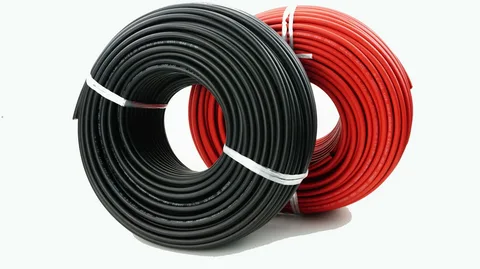Solar Cable Troubleshooting: Common Issues and Solutions

Solar panels are a fantastic way to harness renewable energy for your home or business. But like any system, they require maintenance to ensure optimal performance. One crucial element for solar power generation is solar cable. These specialized cables carry direct current (DC) electricity from the panels to the inverter, which converts it to usable alternating current (AC). Understanding solar cable price in Pakistan and potential issues is essential for any solar system owner.
This post will delve into common solar cable problems and provide solutions to get your system back on track. Remember, safety is paramount when working with electricity. Always turn off your solar system before attempting any troubleshooting or repairs. If you're unsure about any steps, consult a qualified solar technician.
Common Solar Cable Issues
- Physical Damage: Solar cables are exposed to harsh outdoor elements like sunlight, extreme temperatures, and wind. This can lead to:
- Cracked or Cut Insulation: Look for visible signs of damage like cracks, cuts, or exposed wires. These can cause electrical arcing and potential fire hazards.
- Animal Chewing: Rodents and other animals might chew on cables. This exposes the wires and creates a safety risk.
- Abrasion: Cables rubbing against sharp edges or exposed conduit can wear down the insulation over time.
- Loose Connections: Over time, connections between cables and connectors can loosen due to:
- Vibration: Wind and other factors can cause vibrations that loosen connections.
- Thermal Expansion and Contraction: Solar cables expand and contract with temperature changes, which can loosen connections.
- Improper Installation: Connections not appropriately tightened during installation can become loose later.
- Overheating: This can occur due to:
- Incorrect Cable Size: Using cables with a gauge too small for the current load can lead to overheating.
- Insufficient Cable Bundling: Bundling too many cables together can trap heat and cause them to overheat.
- Poor Ventilation: Cables need proper airflow to dissipate heat.
Troubleshooting and Solutions
- Visual Inspection: Perform regular visual inspections of your solar cables, looking for any signs of physical damage, loose connections, or overheating.
- Frequency: Conduct inspections at least twice a year, more often if you live in an area with harsh weather conditions.
- What to Look For: Check for cracks, cuts, exposed wires, loose connectors, signs of burning or melting, discolouration of cables, and any rodent activity.
- Multimeter Testing: A multimeter can help diagnose electrical issues like:
- Voltage Drops: Measure the voltage at different points in the system to identify drops that might indicate loose connections or damaged cables.
- Continuity: Use the continuity setting to ensure a complete circuit and identify any breaks in the cable.
- Repair or Replacement:
- Minor Damage: For small cracks or cuts in the insulation, you might be able to repair the cable with heat shrink tubing that meets solar application specifications. Never use electrical tape as a permanent solution.
- Severe Damage: For significant damage or overheating, replace the affected cable section with a new one that meets Pakistan's required specifications and solar cable price.
- Secure Connections:
- Tighten Connectors: Regularly check and tighten all cable connections using the proper tools.
- Cable Management: Organize cables neatly using cable ties or straps to prevent abrasion and ensure adequate ventilation.
Additional Tips
- Preventative Maintenance: Schedule regular maintenance checkups with a qualified solar technician to identify potential issues before they become significant problems.
- Animal Deterrence: Use animal deterrents like cable guards or ultrasonic repellents to discourage animals from chewing on cables.
- Shading: Minimize cable exposure to direct sunlight whenever possible. This helps to prevent the degradation of the insulation material.
Conclusion
By following these tips and addressing solar cable issues promptly, you can ensure the smooth operation of your solar system and maximize your return on investment. If you're unsure about any aspect of solar cable troubleshooting, consult a qualified solar professional. They can ensure the safety and efficiency of your solar setup.
- Art
- Causes
- Crafts
- Dance
- Drinks
- Film
- Fitness
- Food
- Games
- Gardening
- Health
- Home
- Literature
- Music
- Networking
- Other
- Party
- Religion
- Shopping
- Sports
- Theater
- Wellness
- IT, Cloud, Software and Technology


